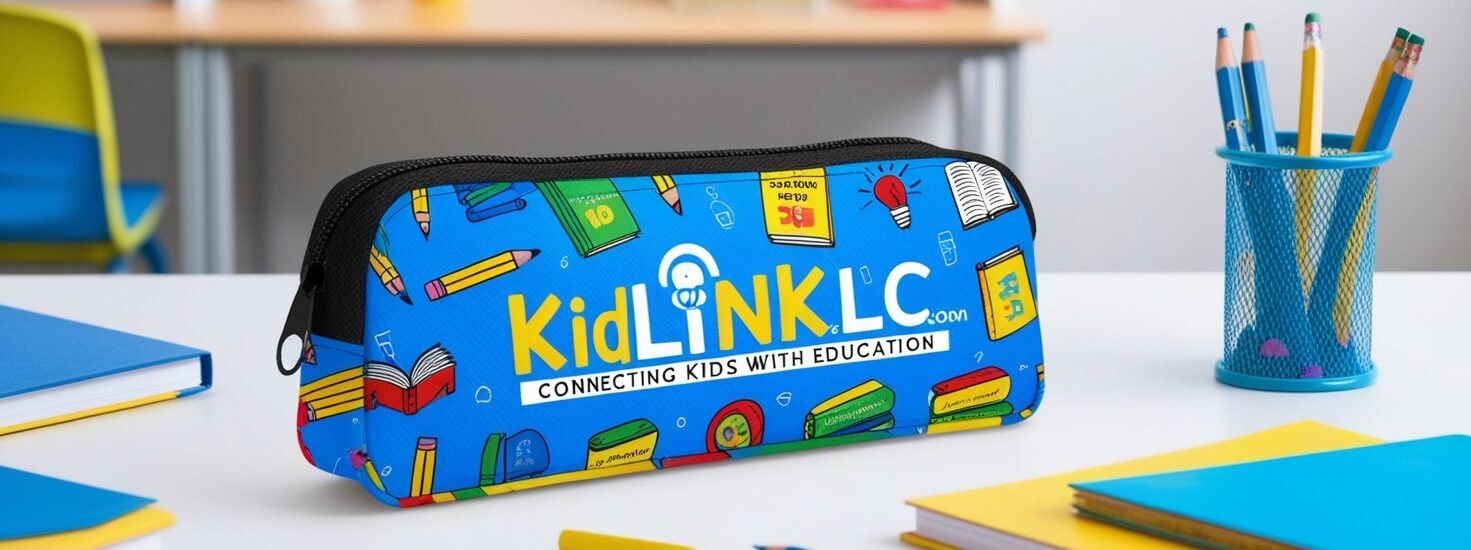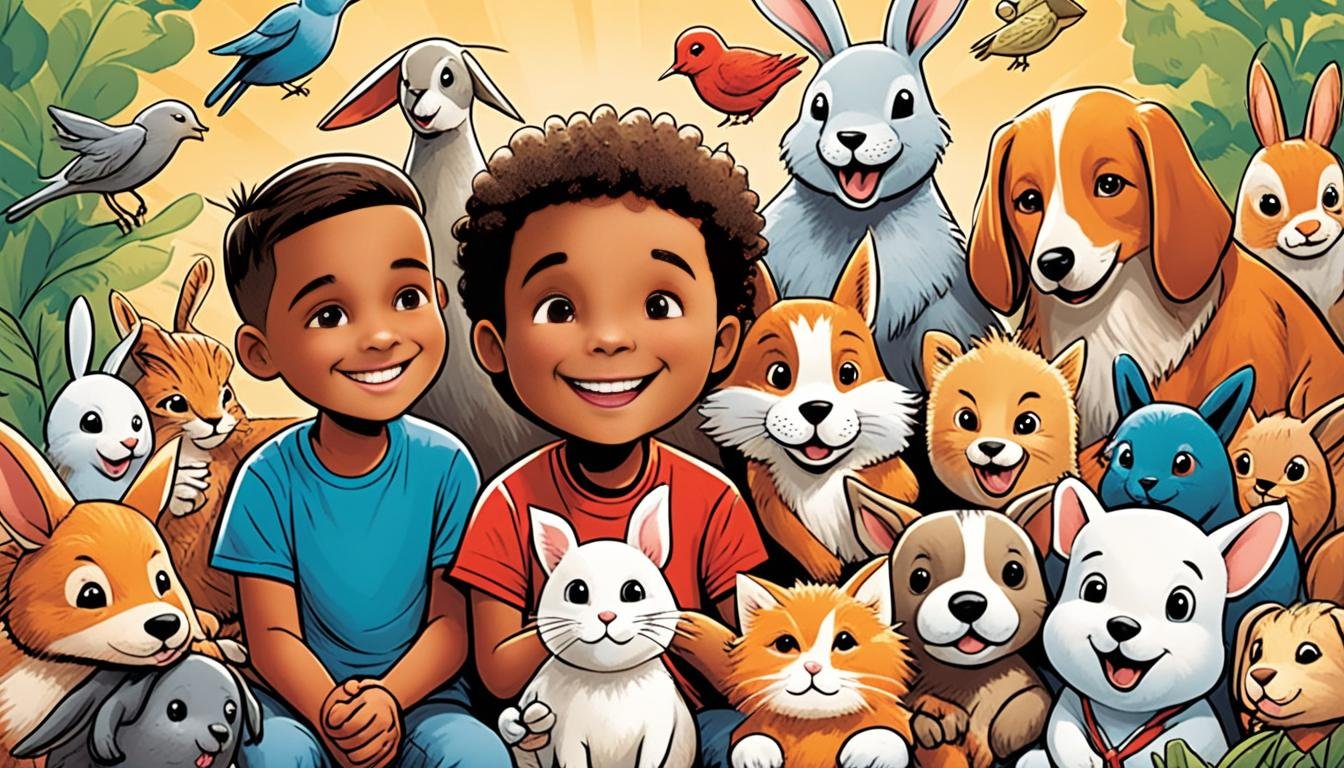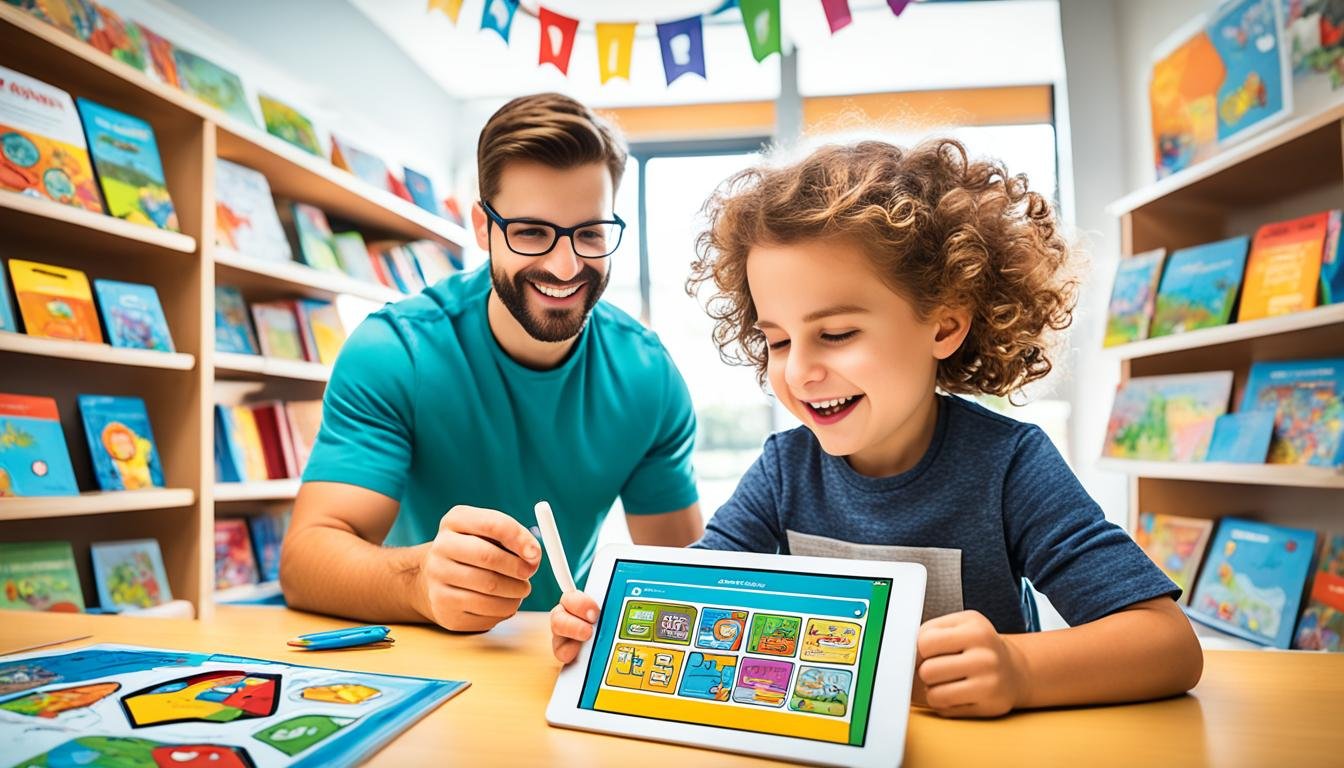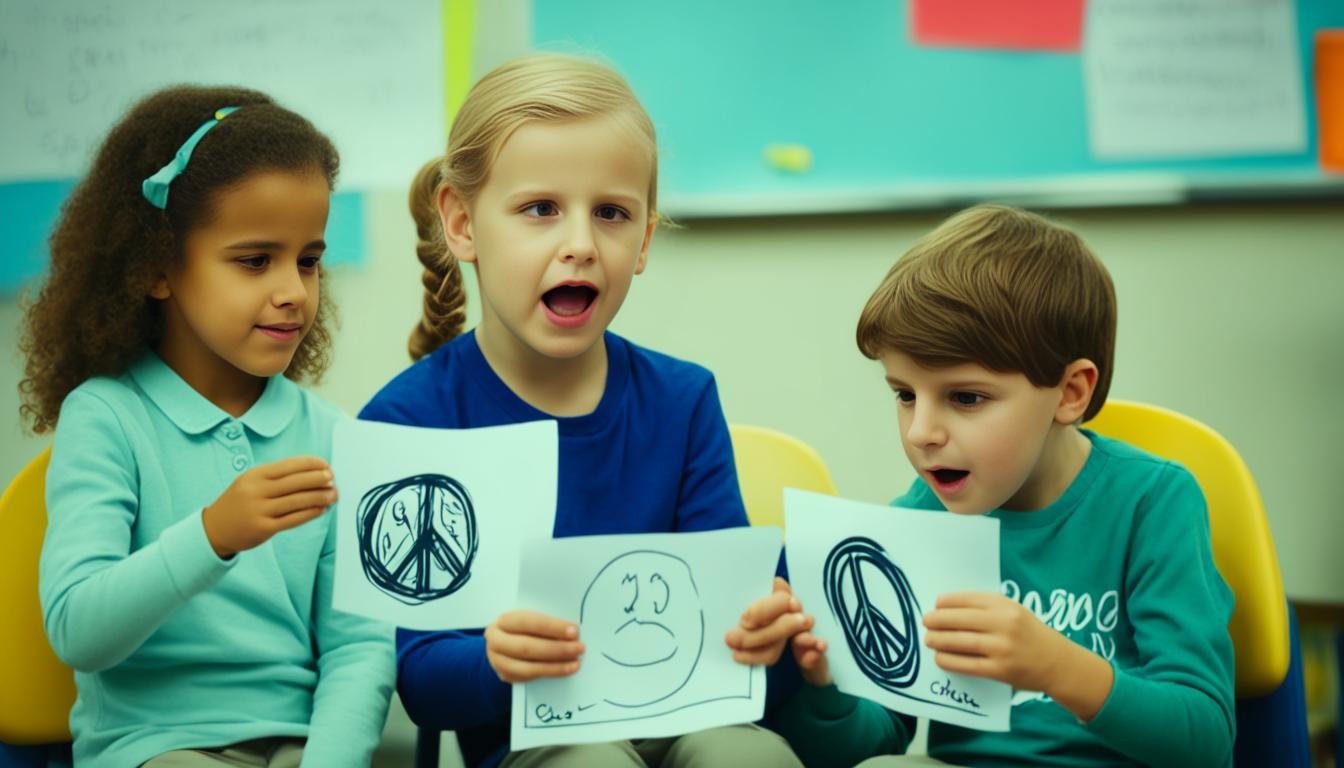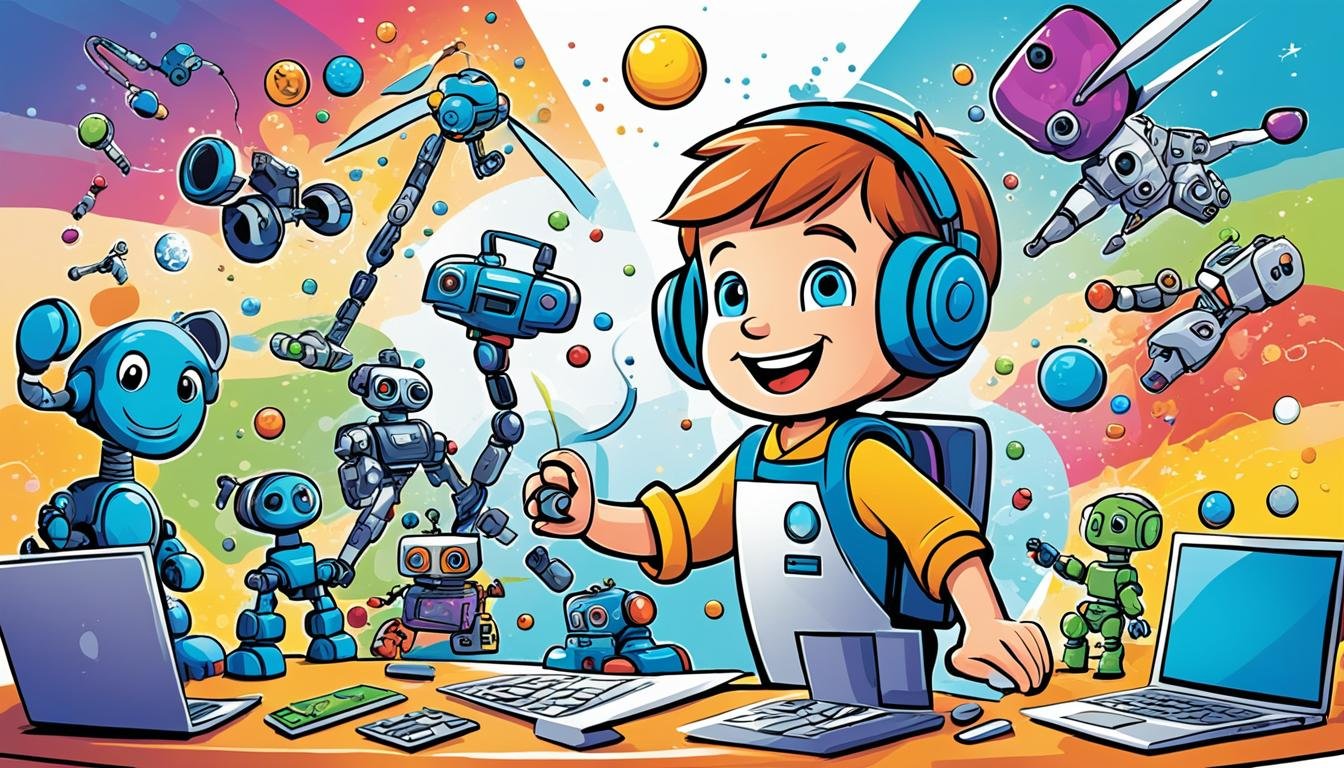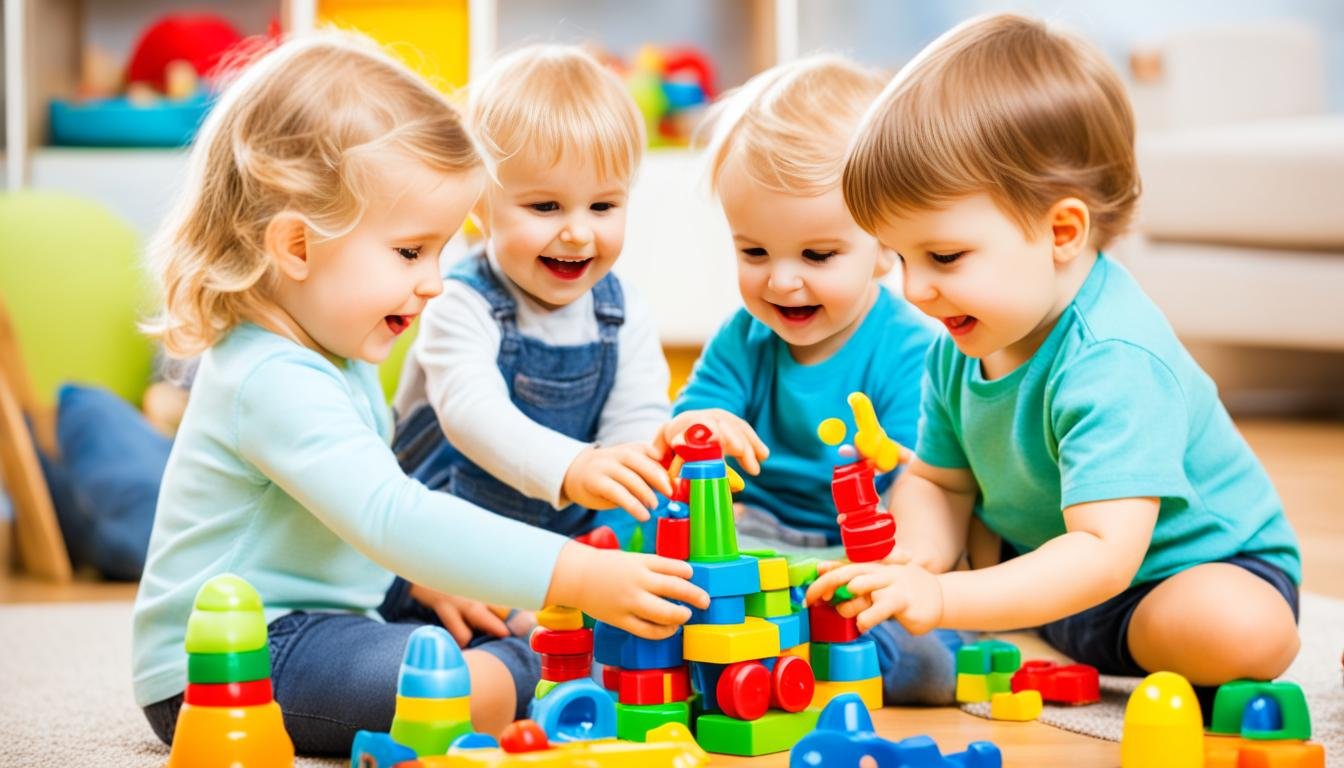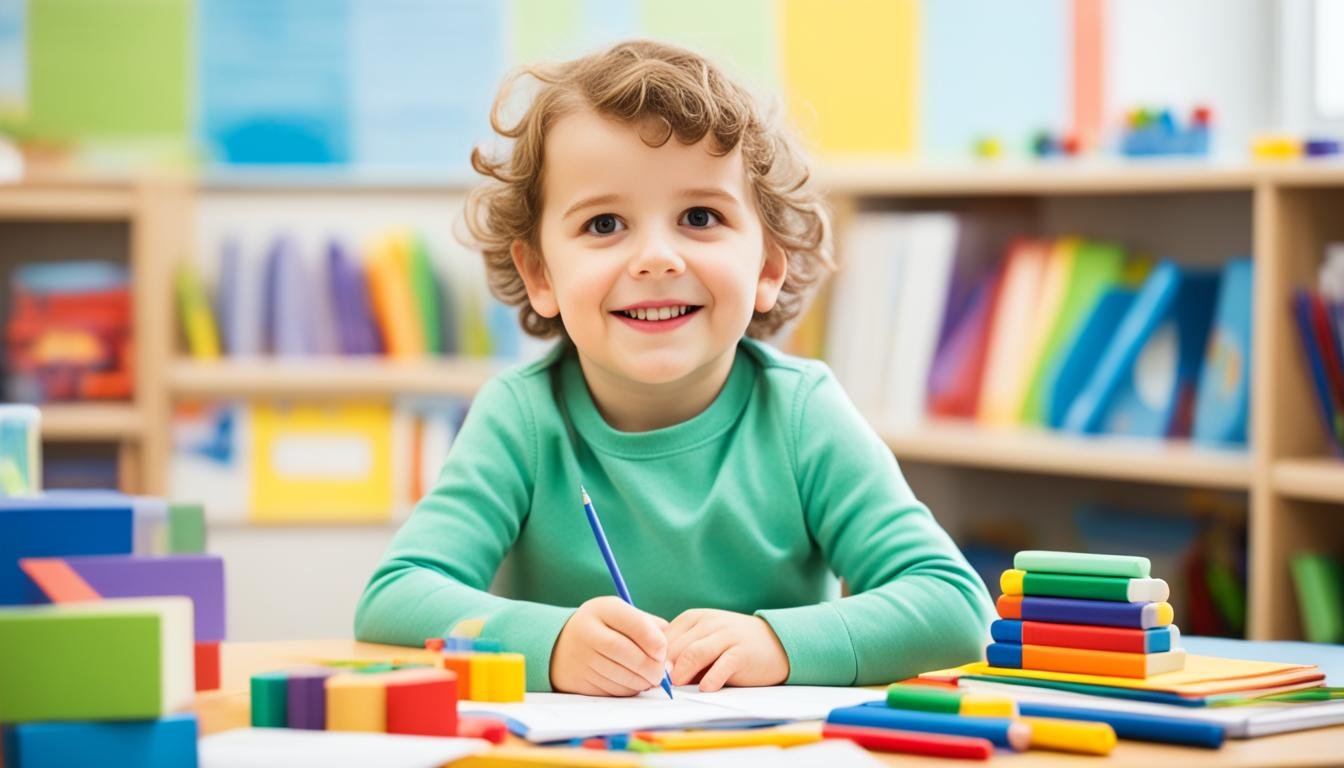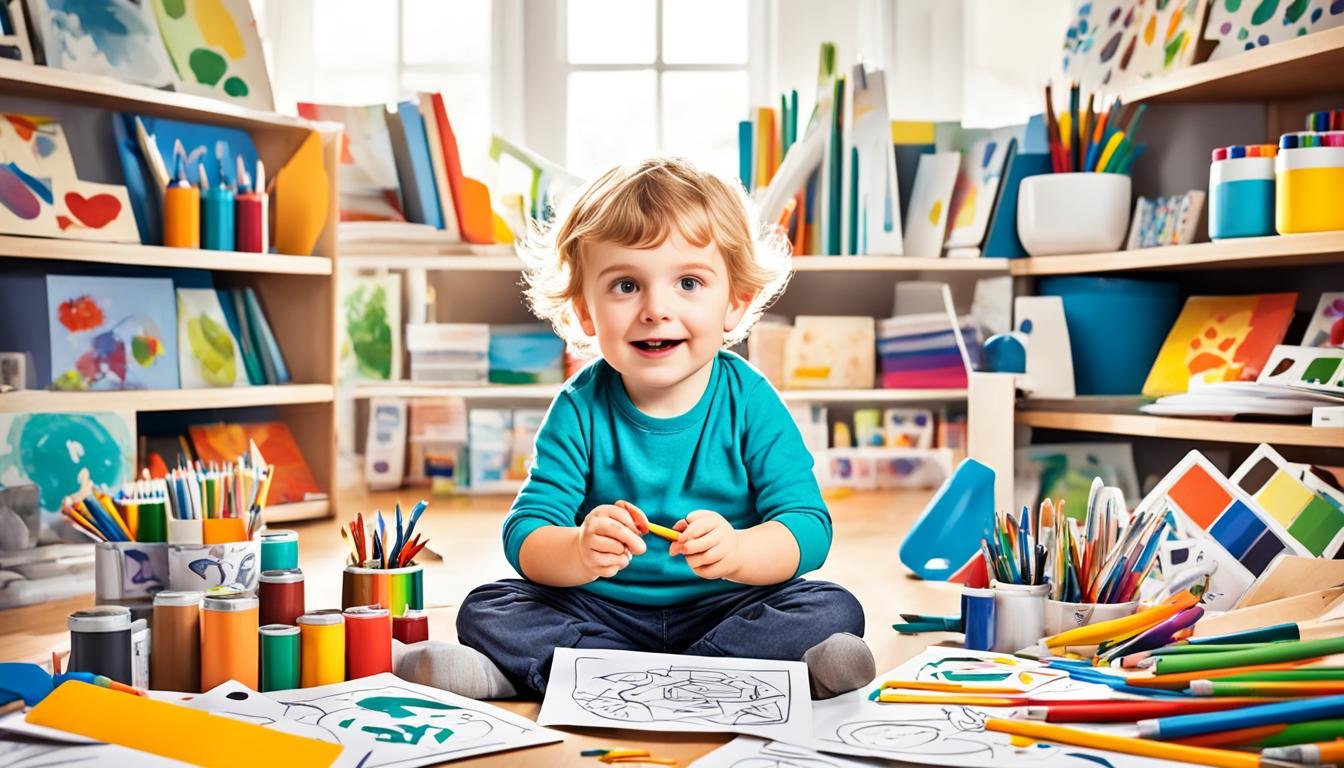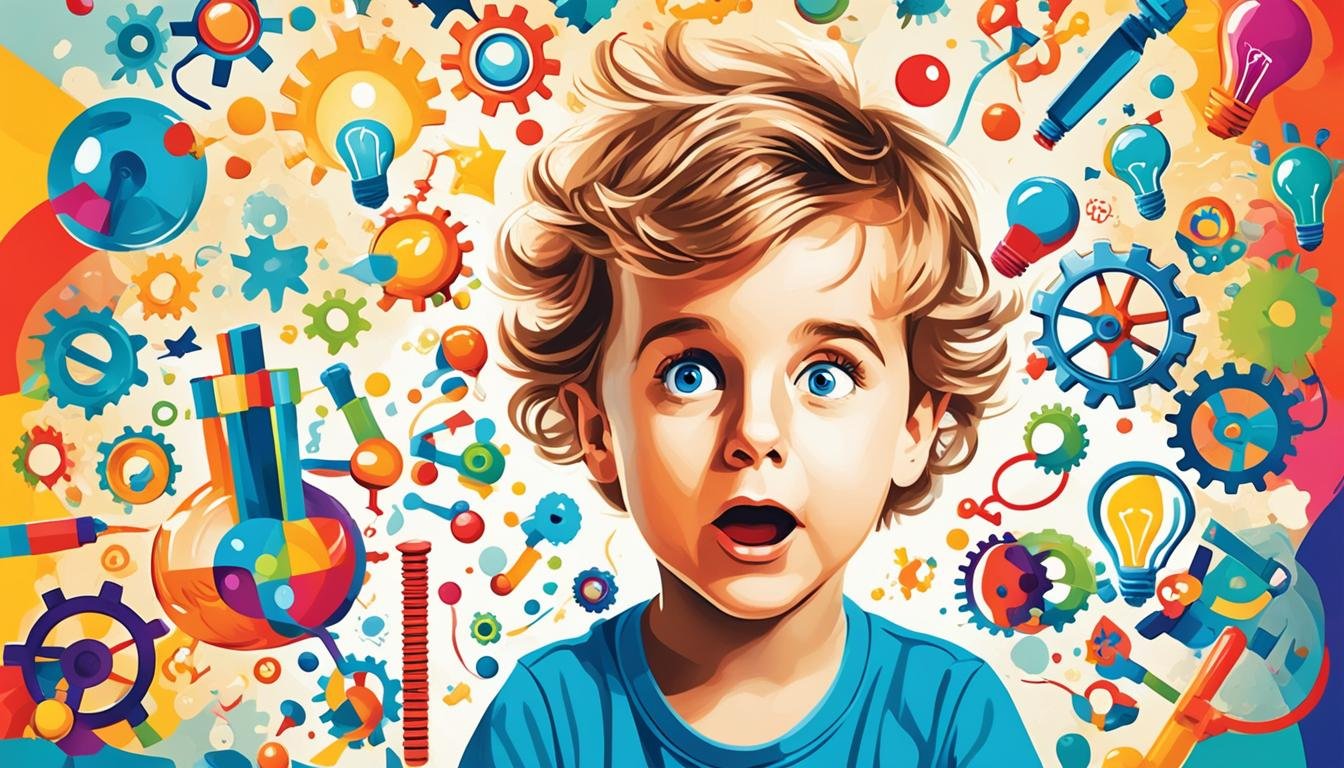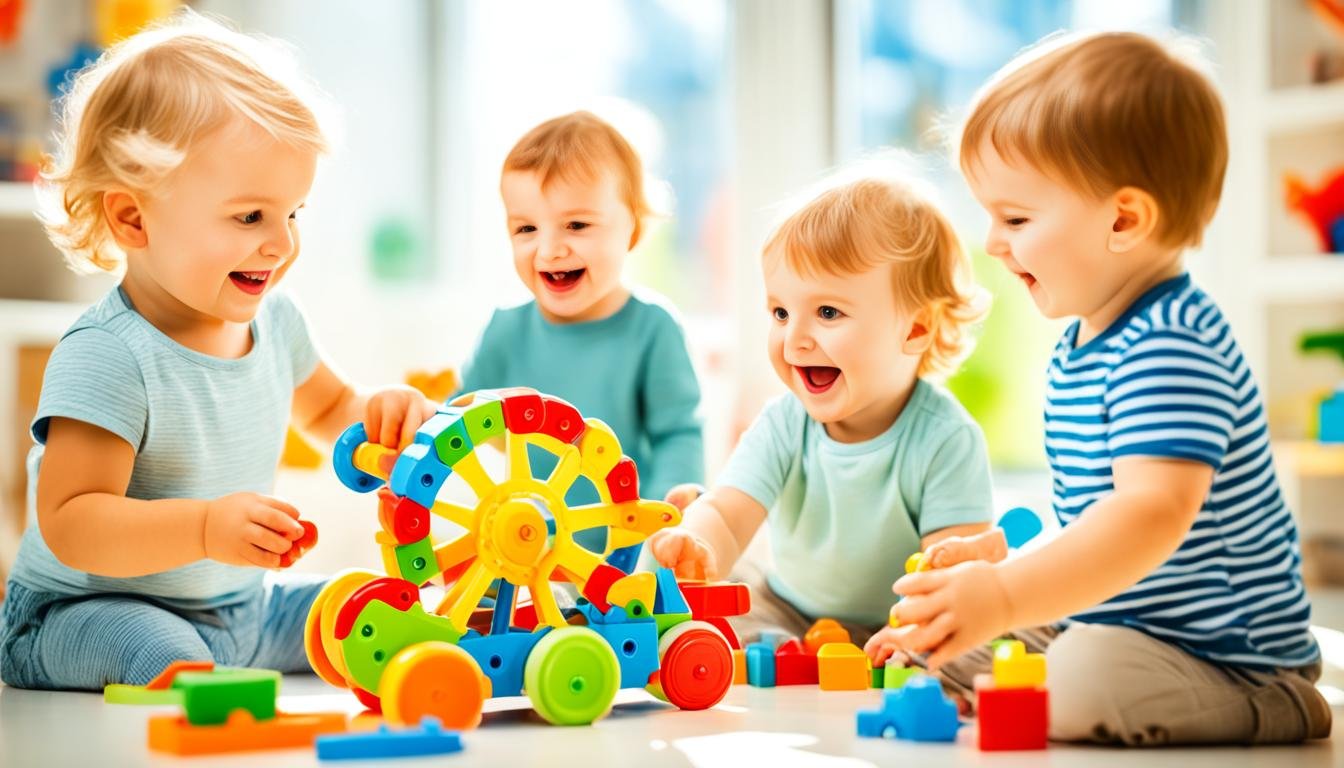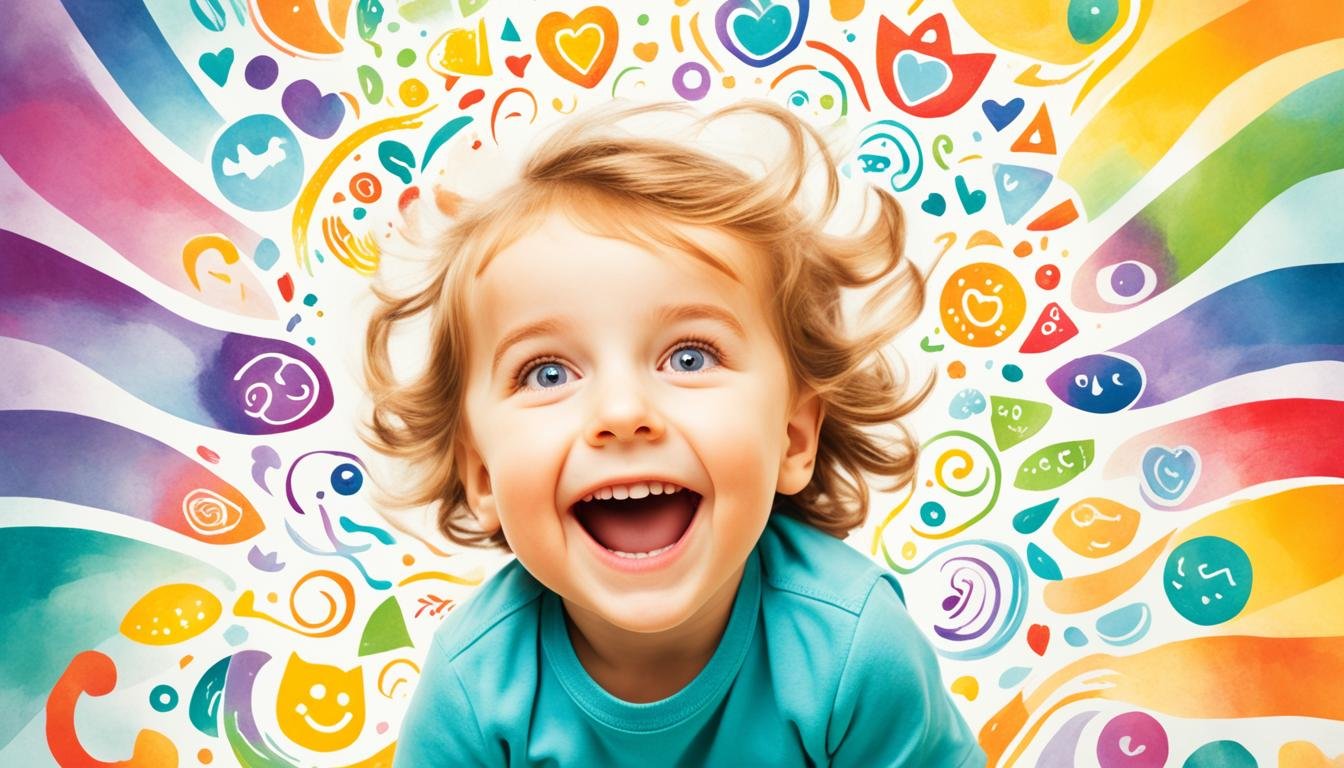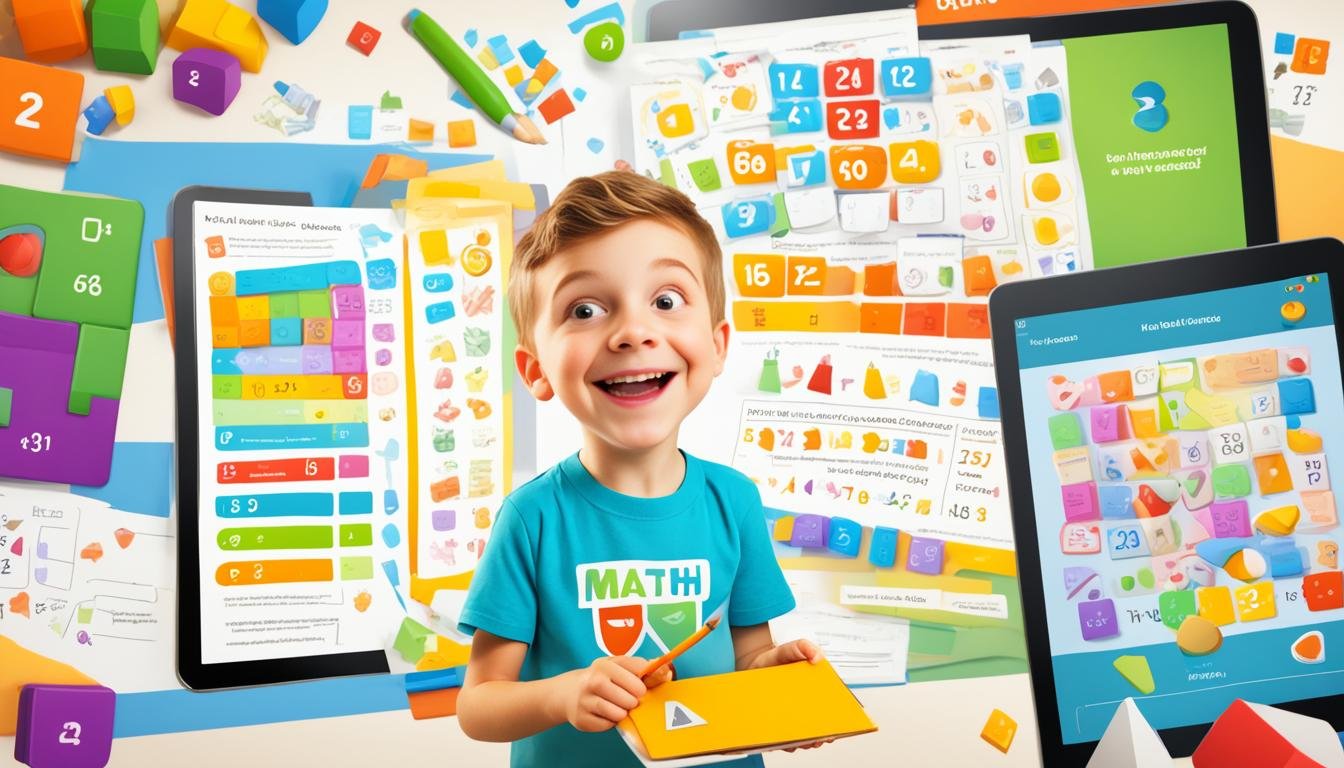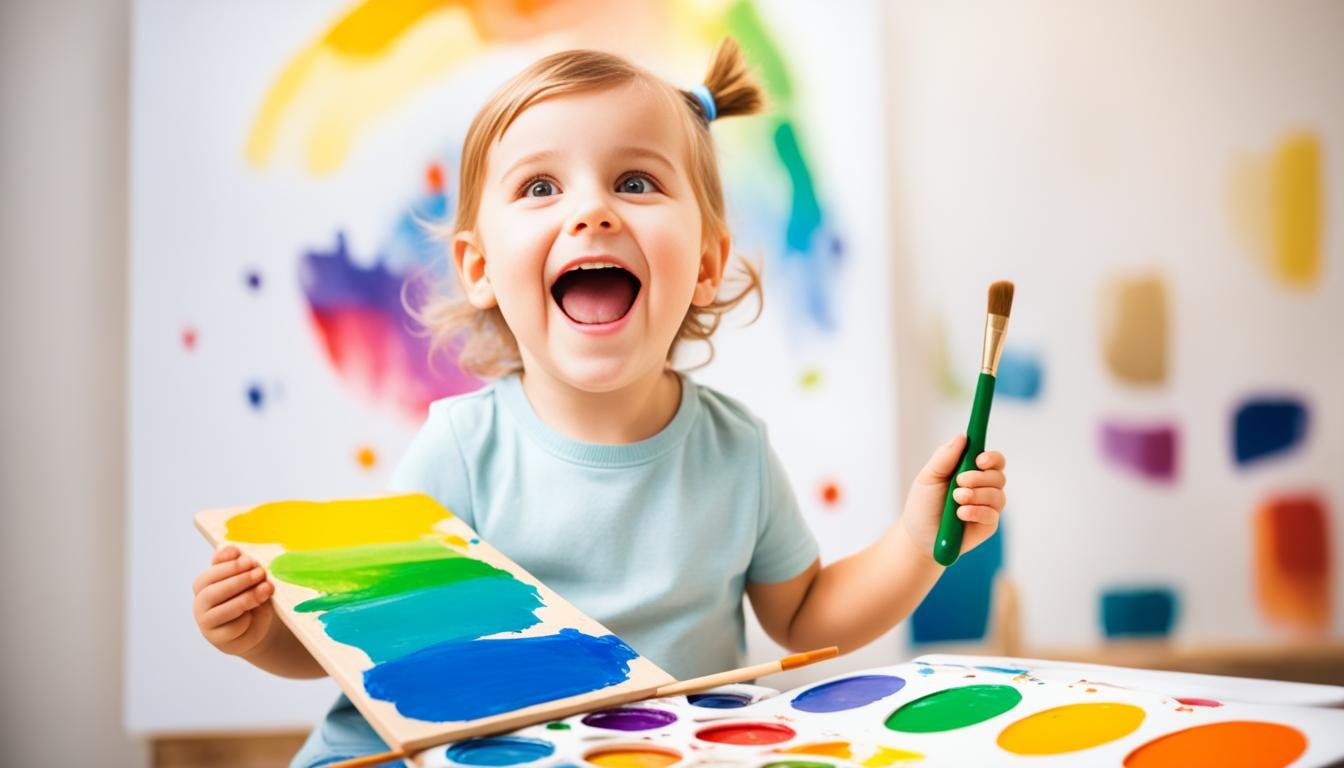Have you ever thought about why some kids get others’ feelings easily while others don’t? Teaching kids empathy and compassion early is key to their social growth. I’ll share powerful ways to help them grow into emotionally smart kids. Learning empathy helps kids and makes the world a kinder place.
Key Takeaways
- Empathy and compassion can be nurtured from a young age.
- Modeling empathetic behavior in everyday situations is crucial.
- Open discussions about emotions enhance children’s emotional intelligence.
- Diverse experiences promote understanding and kindness towards others.
- Engaging in community service helps instill a sense of societal responsibility.
- Using literature and stories can illustrate the importance of empathy.
- Self-compassion is as vital as compassion for others.
Understanding Empathy and Compassion
To truly define empathy, it’s about understanding and feeling what others feel. This is key to emotional intelligence. It means knowing how we and others feel. When we talk about compassion, it’s about wanting to help others who are suffering.
Teaching empathy education to kids is vital for their growth. It helps them connect with the world in a deeper way. By talking about feelings, kids learn to understand and be kind.
This helps them act with empathy and care. For example, talking about feelings helps kids develop empathy. They start to show kindness and understand others better.
It’s important to teach both empathy and compassion early on. Giving kids chances to practice these skills is key. By doing this, we help create a caring future.
For more tips on teaching these values, check out this comprehensive guide.
Why Empathy Matters in Childhood
Empathy is key in how kids interact with others. It helps them grow emotionally and socially. Kids who understand others feel better in their friendships.
Teaching empathy early helps kids become good citizens. It teaches them to value community and connect deeply with others. When kids can see things from another’s point of view, they’re more likely to help out and get along better.
Studies show that empathetic kids do well in school and with friends. They adjust better in new places, showing empathy’s big impact. This kindness spreads, making our communities kinder.
| Aspect | Benefits of Empathy |
|---|---|
| Social Skills | Enhances relationship building and conflict resolution |
| Academic Success | Improves collaboration and communication in learning environments |
| Emotional Intelligence | Promotes self-awareness and regulation |
| Civic Engagement | Inspires community involvement and responsibility |

Teach Kids Empathy and Compassion Through Modeling Behavior
Teaching kids empathy and compassion starts with me showing them how. Kids watch us closely, so when I act with empathy, they learn from me. Showing kindness, listening well, and helping others are great ways to teach them.
Every day, I turn simple actions into lessons about compassion.
Show Empathy in Everyday Situations
In daily life, I try to show empathy. Whether it’s comforting a friend or understanding someone’s stress, these moments teach kids about feelings and support. By doing this, I show them how to be empathetic, which they can learn from.
Handle Conflicts with Empathy
Conflicts happen, but they’re chances to learn. I aim for empathetic talks to help kids see things from others’ views. This helps them control their feelings and understand others better.
By doing this, I solve conflicts and stress the need for empathy as a key life skill.
For more tips on teaching empathy, I look at this article. It offers strategies backed by research that I can use every day.
Discussing Emotions Openly
Talking openly about feelings helps kids share what they’re going through. It lets them say how they feel and understand others better. This kind of talk helps kids grow emotionally smart.
Encouraging Emotional Expression
To make it easy for kids to share their feelings, I use different ways. Storytelling, art, or just talking about their day works well. Letting kids share their feelings helps them see all the different emotions we can feel.
Validating Feelings
It’s important to tell kids that all feelings are okay. Feeling sad, scared, or happy is normal. When we listen with empathy, we show them their feelings are important. This helps them understand and respect others’ feelings too.
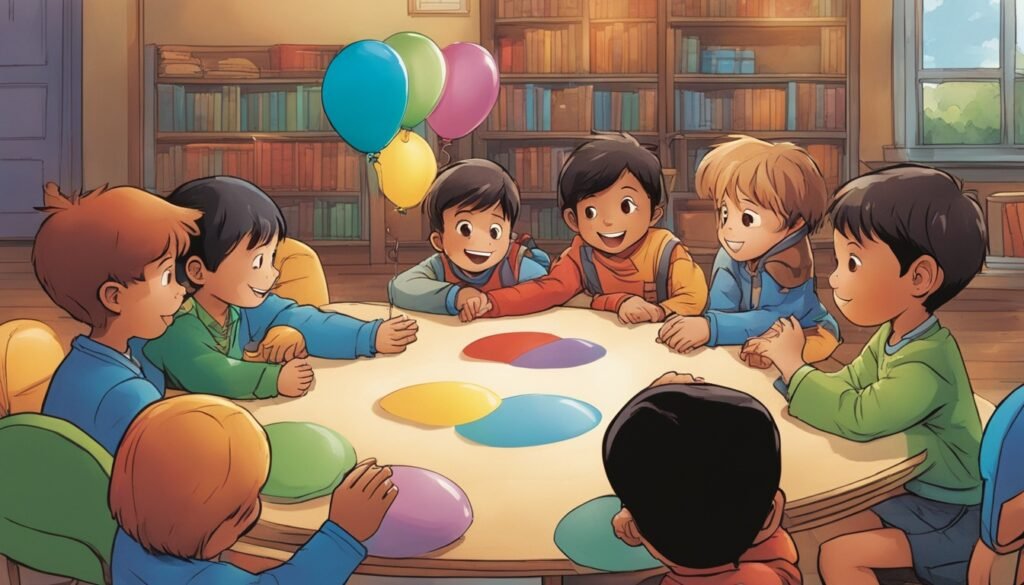
| Technique | Description | Benefits |
|---|---|---|
| Storytelling | Inviting children to share stories about their day | Enhances expression and emotional insight |
| Art Activities | Using drawing or crafting to depict feelings | Fosters creativity while expressing emotions |
| Open Conversations | Regularly engaging in discussions about emotions | Promotes comfort and familiarity with feelings |
Age-Specific Strategies for Teaching Empathy
Teaching empathy at different ages means knowing how kids grow and develop. Each age has its own way of learning empathy. For toddlers, it’s important to teach them about emotions. This helps them understand and share their feelings.
As kids get older, role-playing games are great for teaching empathy. These games make kids think about how others feel. It makes learning fun and helps them connect with friends better.
For school-aged kids, talking about feelings can help them interact better with others. Doing group projects or helping out in the community is also good. These activities teach them how their actions impact others.
Using resources from KidLinkLC.com can help with teaching empathy. They offer videos and tutorials for different ages. By using these strategies at each stage, we can help kids grow emotionally and be more caring.
Empathy Activities for Kids
Teaching kids about empathy can boost their emotional smarts and kindness early on. Using fun games and stories helps my child understand others better. These activities are key for building empathy in different social situations.
Interactive Games to Foster Empathy
Interactive games are a great way for kids to learn about feelings. For instance, emotion charades lets them show and guess emotions. It makes learning fun and helps them grasp feelings better.
These games fit well into playdates or family time. They’re easy to do but pack a big impact.
Storytelling as a Tool
Storytelling is a strong way to teach empathy. Through books, movies, and personal tales, kids can connect with characters’ feelings and choices. After stories, talking about them helps kids think deeply about different views and tough choices. This builds empathy.
For more fun empathy activities, mix in various stories with your child’s daily life.
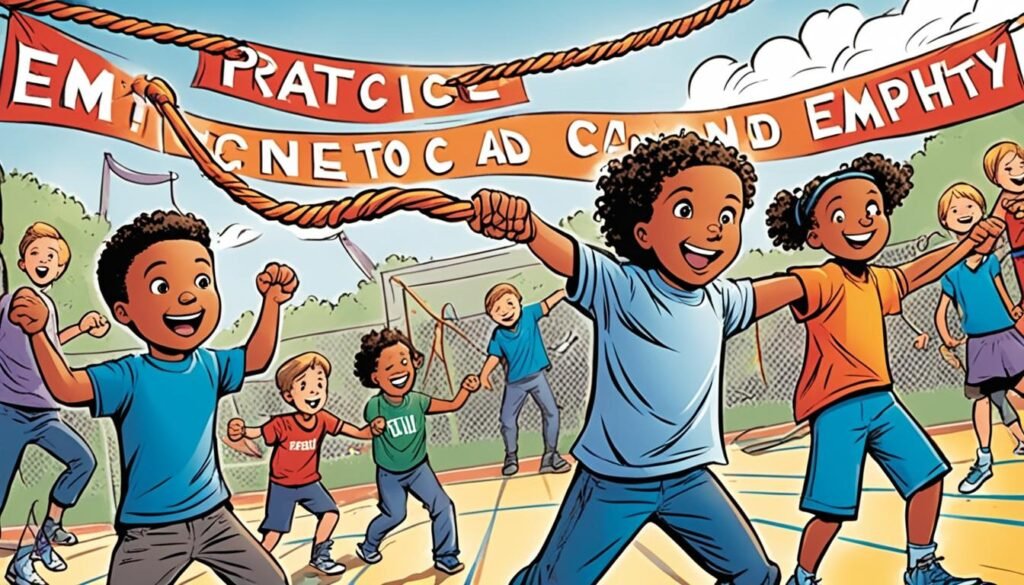
Incorporating Community Service
Community service for kids teaches them about kindness and responsibility. When kids help out in their communities, they learn about different social issues. This helps them feel empathy and understand the world better.
Volunteering also helps kids make connections that are good for them and their community. It’s a way to give back and make a positive change.
Helping Locally
Local projects are great for kids to get involved in their neighborhoods. They can help at food banks, clean parks, or assist at animal shelters. These activities teach them about the needs around them.
By doing these things, kids learn the value of giving back. They see how their actions can help others.
Global Awareness and Volunteer Opportunities
Volunteering abroad helps kids see the world from different perspectives. They can work with organizations that help people in other countries. This teaches them about different cultures and ways of life.
It also makes them realize they can help people both near and far. This inspires them to keep volunteering and making a difference.
Adding community service to a child’s life can bring families closer. It teaches important skills for life. For more tips on getting involved, check out this helpful resource.
Praising Empathetic Behavior
It’s important to praise children when they show empathy. This helps them grow and understand the value of being kind. By telling them how their actions help others, we encourage them to keep being kind.
Specific Praise for Kind Acts
When we praise specific kind acts, kids connect their actions with positive feedback. I tell them how their sharing or helping a friend made a difference. This shows them how their actions positively impact others, making them more likely to do it again.
Reinforcement Through Positive Feedback
Using positive feedback is key to building a caring community. It makes kids feel good when they’re kind. I always point out when my kids are kind, which motivates them to keep it up. Creating a culture that values empathy helps kids understand and value emotional connections.
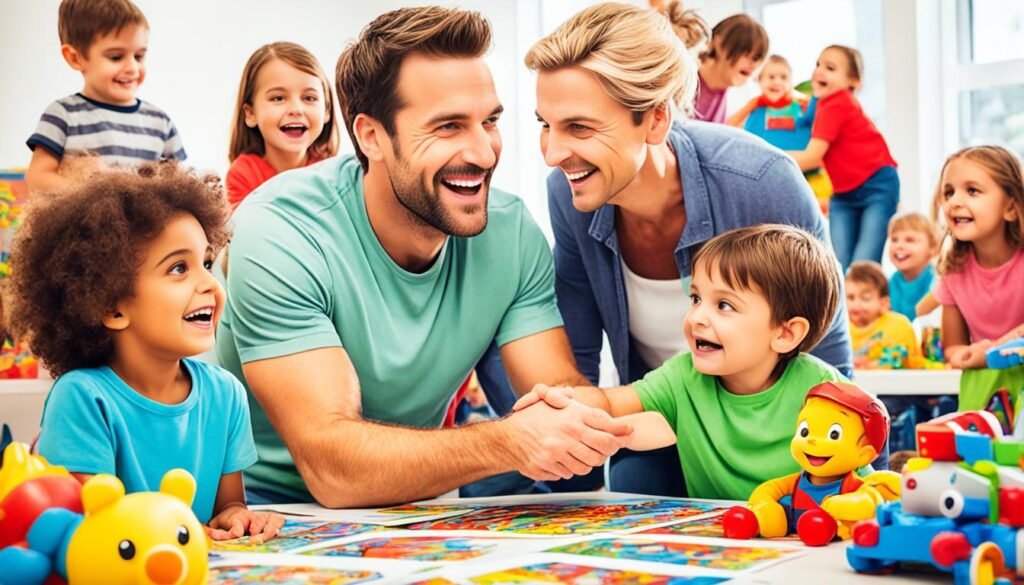
Fostering Compassion Through Diverse Exposure
To help kids feel empathy, it’s key to give them diverse experiences. These experiences teach them to see things from different viewpoints. This is crucial for acceptance and understanding.
When kids meet friends from other backgrounds, they learn a lot. They start to see the world in new ways. This helps them become more caring and understanding.
Encouraging Friendships with Diverse Peers
Friends from different backgrounds make kids’ lives richer. They learn to look beyond their own views. These friendships help break down walls and open new doors.
As kids form these connections, they discover new cultures. This helps them feel closer to others. It makes them more empathetic and kind.
Diversity in Media and Storytelling
Media shapes how kids see the world. Stories and characters in books and movies matter a lot. They help kids feel connected to different lives.
This connection can make kids more accepting. It helps them see beyond their own world. For more tips on raising empathetic kids, check out this useful guide.
Developing Empathy Skills at Home
Creating a caring home helps kids learn empathy. Talking openly about feelings and teaching them to be kind builds a strong emotional space. By discussing compassion, kids learn to see things from others’ viewpoints. Using simple steps can greatly improve their empathy.
Creating a Compassionate Home Environment
Having a special spot in our homes for kindness makes a big impact. A “We Care” corner with reminders of being kind can motivate kids to think about their actions. Here are some steps I find helpful:
- Use decorative items that symbolize empathy, such as drawings and quotes.
- Encourage family members to contribute their thoughts and artwork related to kindness.
- Regularly update this space to reflect discussions about compassion and empathy.
Family Discussions on Empathy
I make sure to have regular talks about empathy with my family. These chats let kids share their feelings and thoughts about others. It helps them understand compassion better. It’s key to use open-ended questions in these talks. Some topics I cover include:
- The importance of kindness in daily life.
- Real-life scenarios where empathy played a crucial role.
- Listening to each other’s feelings without judgment.
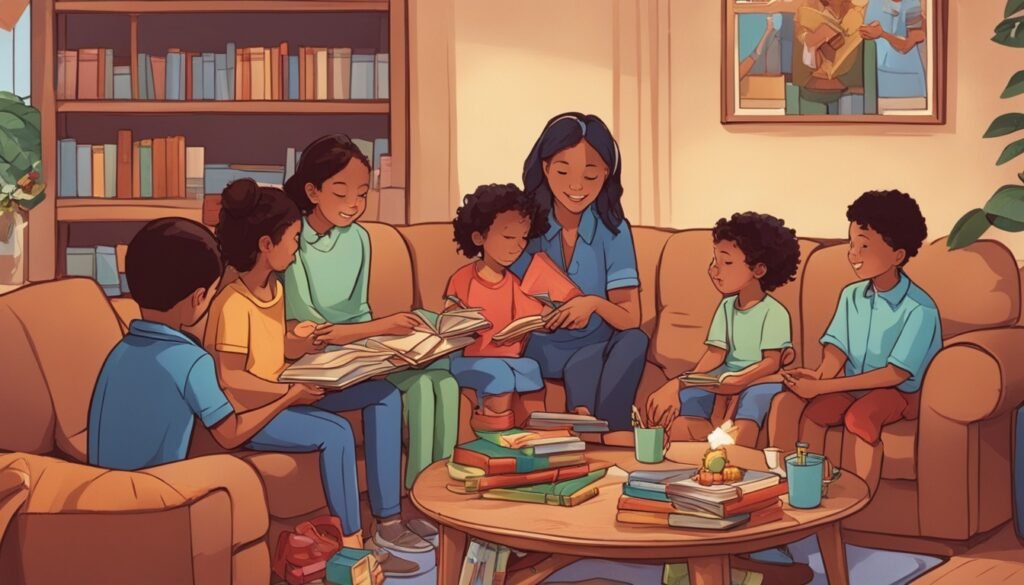
These moments strengthen our family bond and teach the value of understanding and compassion. To make sure everyone knows the rules, I suggest checking this page for more info on our shared values.
Utilizing Literature to Teach Empathy and Compassion
Books are a great way to teach kids about empathy and compassion. They offer stories that show kindness and positive actions. These stories help kids understand and feel for others.
Books That Inspire Kindness
Choosing the right books is key to teaching compassion. Here are some top picks with kindness themes:
- The Giving Tree by Shel Silverstein
- Wonder by R.J. Palacio
- Have You Filled a Bucket Today? by Carol McCloud
- Last Stop on Market Street by Matt de la Peña
- Each Kindness by Jacqueline Woodson
Discussing Characters’ Feelings
Talking about characters’ feelings helps kids think about their own. It makes them better at sharing their feelings. This way, they learn to understand others better.
Here’s a simple way to talk about feelings in books:
| Book | Character | Emotion | Discussion Questions |
|---|---|---|---|
| The Giving Tree | Tree | Love | What does the Tree give? How does this make you feel? |
| Wonder | Auggie | Fear | What fears does Auggie face? How would you support him? |
| Have You Filled a Bucket Today? | Children | Happiness | What acts fill a bucket? How can you fill someone’s bucket today? |
| Last Stop on Market Street | CJ | Curiosity | What does CJ notice about his community? How does this change his perspective? |
| Each Kindness | Maya | Regret | How does Maya feel about her actions? What can we learn from her experience? |
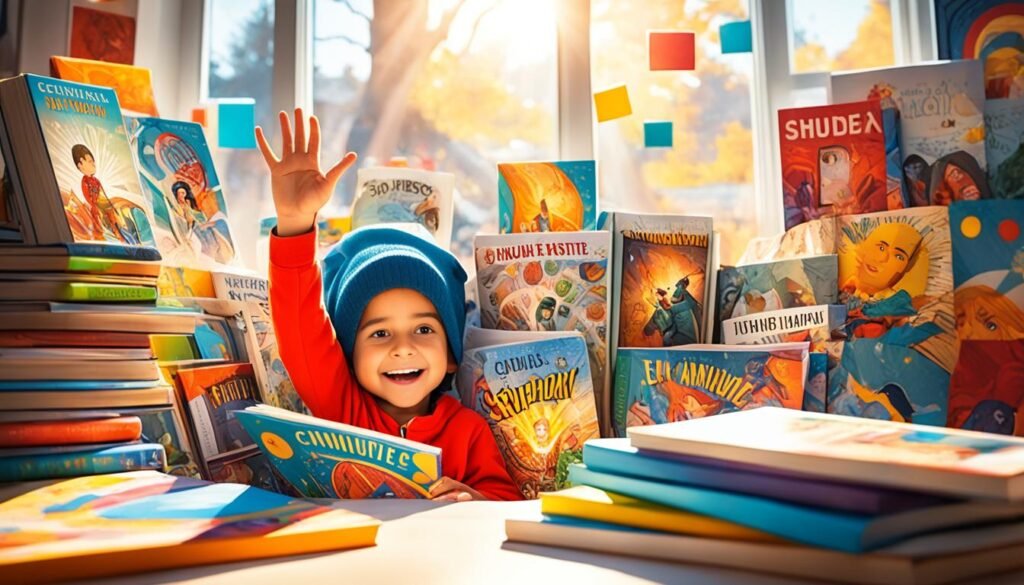
Through stories, we can teach kids to be empathetic and kind. Reading and talking about characters helps them understand and connect with others. This way, they become more caring people.
Using Play to Teach Empathy
Play is a great way to help kids learn empathy. Activities like emotion charades and role-playing let them see things from another’s point of view. These fun activities help kids understand and share feelings, building empathy.
Emotion Charades and Role-Playing
Emotion charades make learning empathy fun. Kids act out feelings for others to guess. It’s a great way for them to learn about their own and others’ emotions.
Role-playing lets kids try out different life situations from new angles. It helps them understand and react with kindness in real life.
Games That Encourage Perspective-Taking
Games that make kids think about others’ feelings help them grow empathy. These games lead to deep discussions about how people might feel in different situations. They teach kids to be more understanding and respectful.
Playing these games prepares kids for complex social situations. It helps them be more thoughtful and caring.
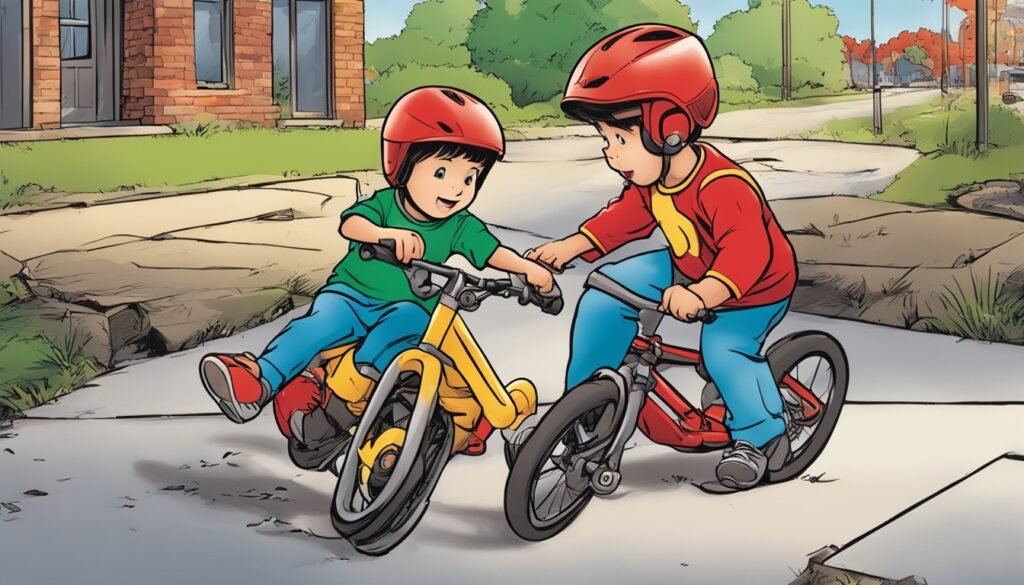
| Game Type | Benefits | Skills Developed |
|---|---|---|
| Emotion Charades | Enhances emotional recognition | Emotion expression, engagement |
| Role-Playing Scenarios | Practices real-life empathy | Conflict resolution, communication |
| Perspective-Taking Activities | Builds understanding of diverse feelings | Perspective-taking, critical thinking |
Teaching Kids About Privilege and Fairness
Teaching kids about privilege is key to their understanding of fairness. Talking to them about inequality helps them see the world in new ways. It creates a space for them to think about their own lives and others.
Understanding Different Perspectives
Encouraging kids to hear from different people helps them get social dynamics. It’s important to give them real examples and stories. I use stories and my own experiences to show how things can be different because of things like money, race, or family.
This helps them grow by teaching them to feel for others.
Discussing Equality vs. Equity
Talking about the difference between equality and equity helps kids understand these big ideas. Equality means everyone gets the same things. Equity means giving what people need based on their own situation. I use pictures and group talks to make these ideas clear.
This helps kids see that fairness can mean different things for different people. It’s key for them to be kind to others.
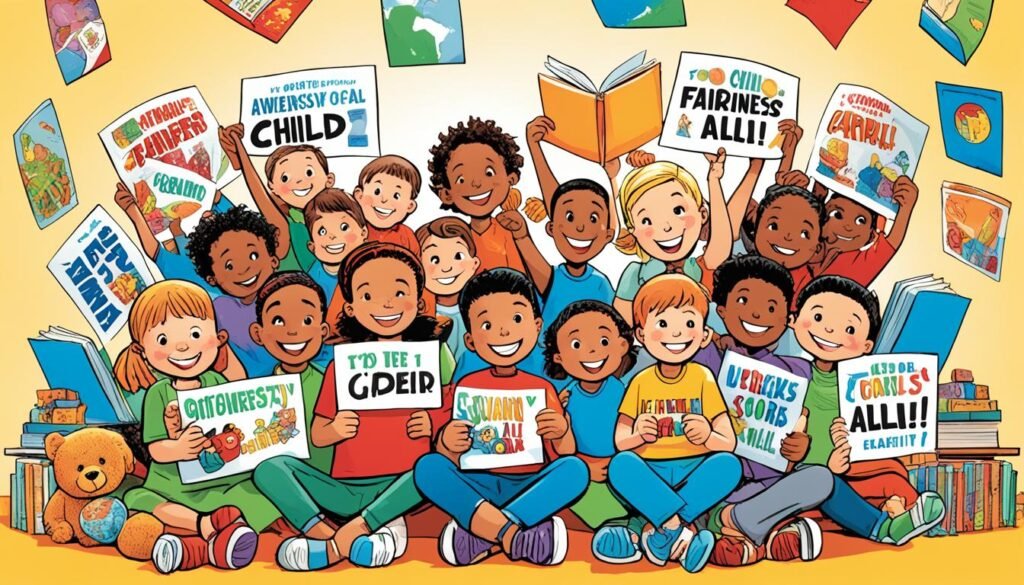
| Concept | Definition | Example |
|---|---|---|
| Equality | Same resources for everyone | All students receive the same textbook |
| Equity | Resources tailored to individual needs | Students with learning disabilities get extra support |
Through these talks and experiences, kids learn about privilege and fairness. They also feel a sense of responsibility to help make the world better. I believe this leads to a kinder future.
Encouraging Active Listening Skills
Active listening is key for building empathy. I teach kids to focus on understanding others, not just thinking of what to say next. This helps them improve their communication and build strong relationships.
Listening to Understand, Not to Respond
Teaching kids to listen with purpose changes how they interact. They move from just waiting to speak to really being part of the conversation. This way, they can understand feelings and views that are different from theirs.
Practicing Empathy Through Conversations
In daily talks, I help kids value others’ feelings. This is a big part of empathy. By using strategies to listen well, kids connect more deeply. I suggest they repeat back what they heard to show they get it, building respect and care in their talks.

Exploring Compassionate Action
Doing kind acts is key to teaching empathy to kids. Adding family compassionate actions to our daily life makes our bond stronger. It also teaches kids to care for others. This helps them be kind and empathetic for life.
Helping Others as a Family Activity
Volunteering together is a great way to show the value of helping others. It could be helping at a food drive or a community shelter. These activities show kids how even small actions can make a big difference.
Being together in these efforts teaches us all that kindness helps everyone. It makes us understand that being kind is good for both the giver and the receiver.
Modeling Kind Behavior in Public
Showing kindness in public is a strong way to teach kids empathy. Small actions like opening a door or helping with groceries show how kindness can make someone’s day. I tell my kids how these actions can inspire others to be kind too.
Seeing my actions, they learn to value empathy. This makes them more empathetic themselves.

Being part of these acts, my family builds a caring culture. Doing kind things in public strengthens our community and teaches my kids the value of caring for others. This makes our family closer and helps make society more compassionate.
Learn more about strategiesto teach children empathy and compassion
Strategies to Encourage Self-Compassion
Teaching kids about self-compassion is key. It helps them understand and manage their feelings. When kids learn to be kind to themselves, they grow emotionally healthy.
The Importance of Self-Reflection
Self-reflection helps kids think about their feelings and why they feel that way. It makes them see their strengths and challenges. This helps them become more emotionally smart and resilient.
Managing Personal Emotions
Teaching kids to handle their feelings is crucial. They can learn to be kind to themselves through mindfulness, journaling, or art. These methods help them deal with emotions in a good way. It also helps them connect better with others.
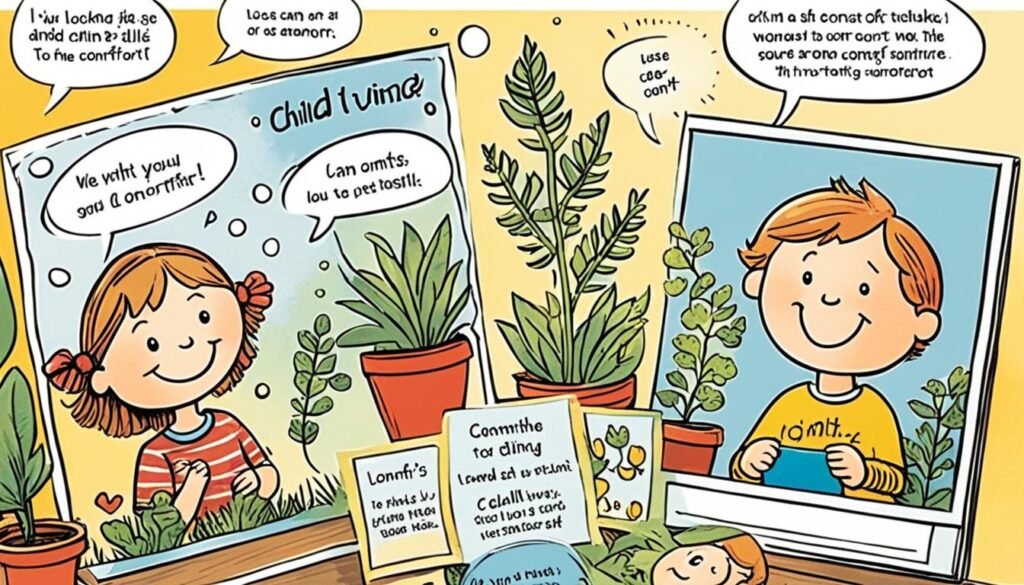
| Self-Compassion Strategies | Description |
|---|---|
| Mindfulness Practices | Encouraging kids to engage in mindfulness fosters awareness of their emotions. |
| Journaling | Writing down feelings allows for better understanding and reflection on experiences. |
| Creative Expression | Using art and creativity helps kids articulate their emotions non-verbally. |
| Positive Affirmations | Reinforcing positive self-talk aids in building confidence and self-worth. |
Promoting Empathy in Educational Settings
Creating a space that values empathy in schools is key for compassionate learning. By using empathetic teaching methods and adding community projects, teachers help students connect with others. This makes students more understanding and caring.
Compassionate Classrooms and Curriculum
A caring classroom teaches students to be kind and respectful. Teachers lead by example, showing empathy in how they talk to students. They create a safe place where everyone feels important.
They also teach a curriculum that talks about feelings and right and wrong. This helps students see things from different viewpoints. It helps them think deeply and understand the world better.
Community Activities That Foster Empathy
Doing community projects helps students learn empathy. These projects let them use what they’ve learned in real life. Helping out or joining local efforts teaches them about kindness and responsibility.
They see how their actions can make a difference. This makes them want to make the world a better place.
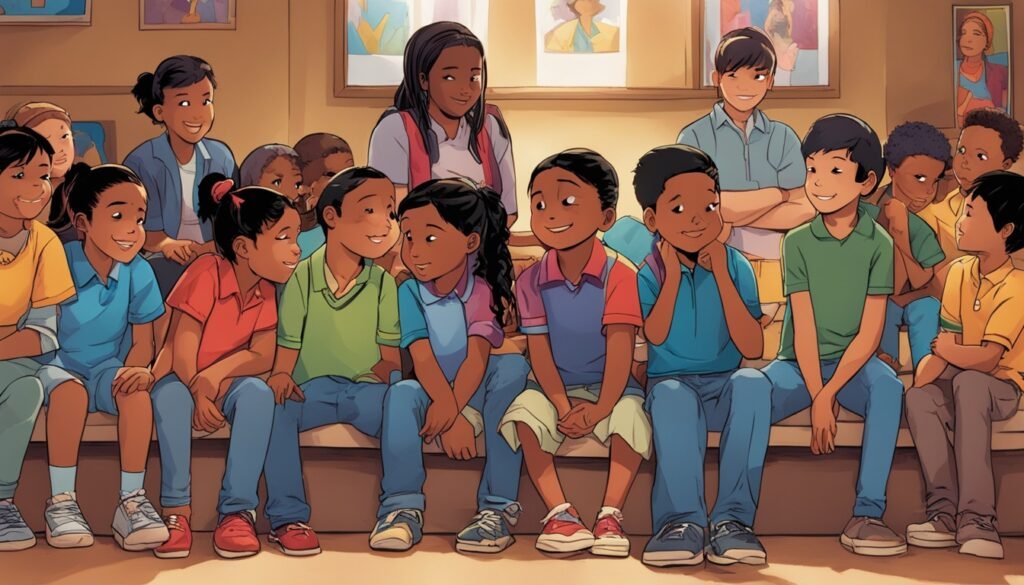
| Type of Activity | Benefits |
|---|---|
| Classroom Discussions | Encourages critical thinking about emotions |
| Peer Mentorship Programs | Fostering connections between different age groups |
| Community Service Projects | Hands-on experience in helping others |
| Collaboration with Nonprofits | Broader understanding of social issues |
| Fundraising Events | Building teamwork and responsibility |
Using these methods in schools makes learning better for students. It helps them become caring people who think about their communities.
How to Nurture Empathy in Children
It’s key to help kids grow their empathy for their social growth. This needs a careful plan that keeps it steady and builds empathy little by little. Every chance we get, we can help kids learn to be more empathetic.
Building Empathy Over Time
Regular time with kids is key to growing empathy. Talking about feelings and helping them see others’ views helps a lot. Simple things like acting out different situations can open their eyes to others’ lives.
Doing this often makes them understand compassion better.
Consistency in Teaching Methods
Being consistent in teaching empathy is very important. Families and teachers should use the same methods. This means having regular talks about feelings and how to react in different situations.
This keeps kids thinking about others and shows them why being kind matters all the time.
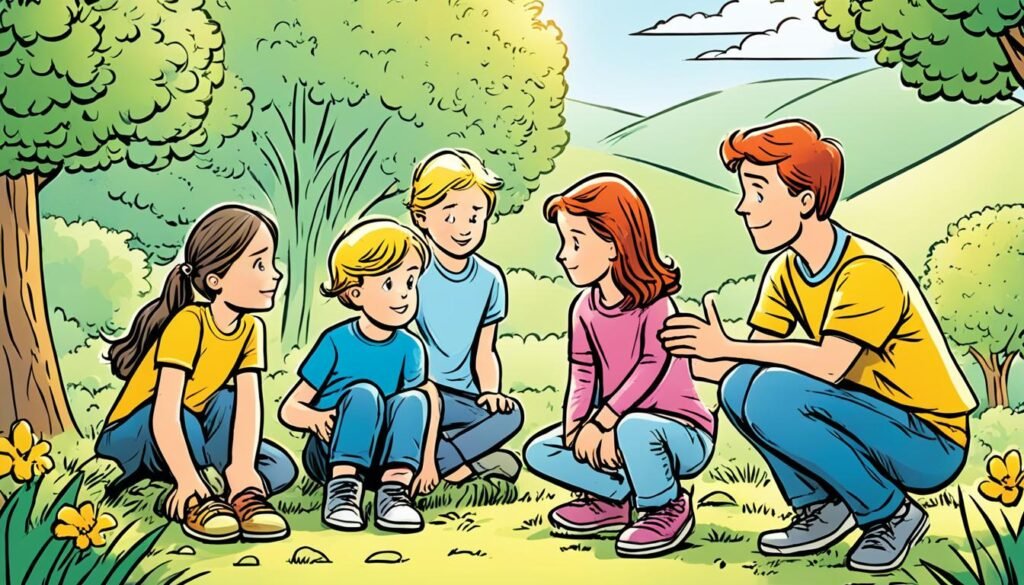
Conclusion
Teaching empathy is key to raising a kind and understanding future generation. It starts by nurturing compassion in young children. This not only shapes their character but also affects their community positively.
By sharing different experiences and talking openly about feelings, we help kids learn empathy. We also need to show them what empathy looks like in action. This way, they get the skills to deal with complex human relationships.
Empathy education is an ongoing process. It needs our daily effort and a true wish to teach these values to our kids. I’ve seen how the early lessons we give can change how children treat others. It leads to a kinder and more thoughtful world.
Our aim is to keep teaching empathy and compassion. This ongoing effort makes sure our kids are ready to help make the world a better place.
